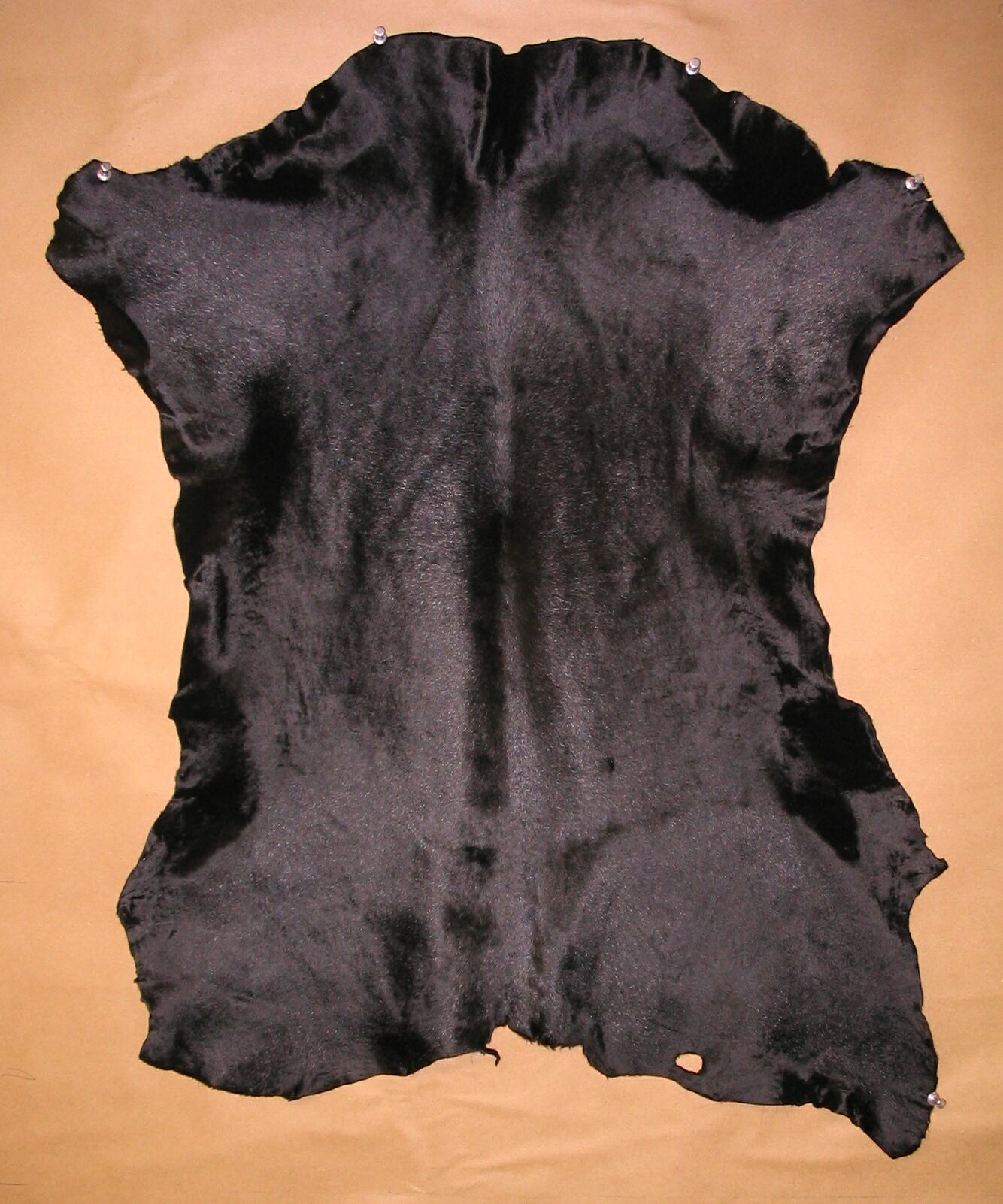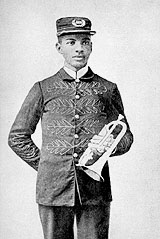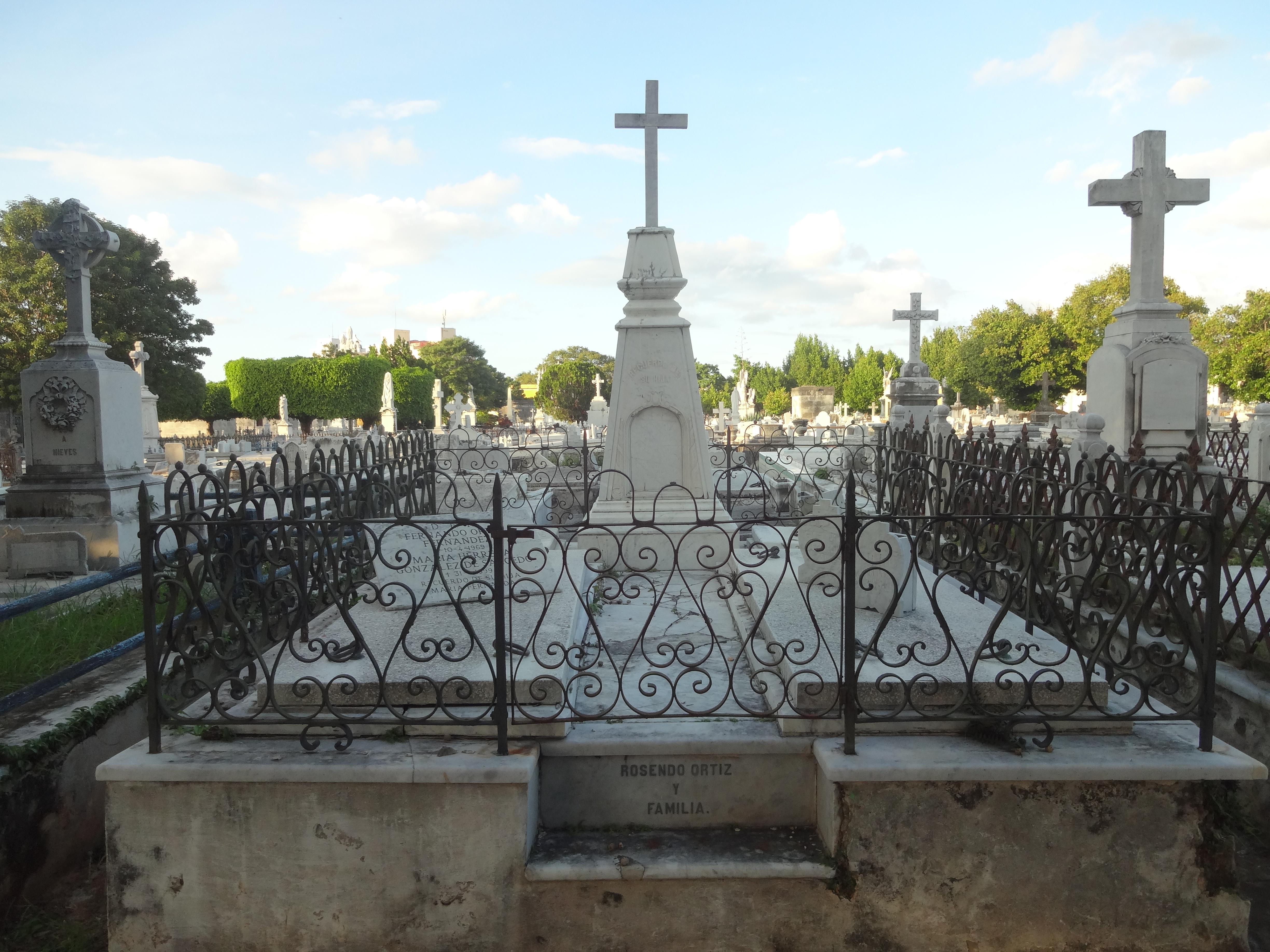|
Bongó
Bongos ( es, bongó) are an Afro-Cuban percussion instrument consisting of a pair of small open bottomed hand drums of different sizes. They are struck with both hands, most commonly in an eight-stroke pattern called ''martillo'' (hammer). The larger drum is called a hembra (Spanish for female) and the smaller drum is called the macho (Spanish for male). They are mainly employed in the rhythm section of son cubano and salsa music, salsa ensembles, often alongside other drums such as the larger congas and the stick-struck timbales. This brought bongos into our cultural vocabulary, from Beatniks to Mambo to the current revival of Cuban Folklore, folkloric music. Bongo drummers (''bongoseros'') emerged as the only drummers of son cubano ensembles in eastern Cuban Revolution, Cuba toward the end of the 19th century. It is believed that Bongos evolved from the Abakua Drum trio 'Bonko' and its lead drum 'Bonko Enmiwewos'. These drums are still a fundamental part of the Abakua Religion ... [...More Info...] [...Related Items...] OR: [Wikipedia] [Google] [Baidu] |
Son Cubano
Son cubano is a genre of music and dance that originated in the highlands of eastern Cuba during the late 19th century. It is a syncretic genre that blends elements of Spanish and African origin. Among its fundamental Hispanic components are the vocal style, lyrical metre and the primacy of the tres, derived from the Spanish guitar. On the other hand, its characteristic clave rhythm, call and response structure and percussion section ( bongo, maracas, etc.) are all rooted in traditions of Bantu origin. Around 1909 the son reached Havana, where the first recordings were made in 1917. This marked the start of its expansion throughout the island, becoming Cuba's most popular and influential genre. While early groups had between three and five members, during the 1920s the ''sexteto'' (sextet) became the genre's primary format. By the 1930s, many bands had incorporated a trumpet, becoming ''septetos'', and in the 1940s a larger type of ensemble featuring congas and piano became th ... [...More Info...] [...Related Items...] OR: [Wikipedia] [Google] [Baidu] |
Timbales
Timbales () or pailas are shallow single-headed drums with metal casing. They are shallower than single-headed tom-toms and usually tuned much higher, especially for their size.Orovio, Helio 1981. ''Diccionario de la música cubana: biográfico y técnico''. Entries for ''Paila criolla''; ''Timbal criollo''. They were developed as an alternative to classical timpani in Cuba in the early 20th century and later spread across Latin America and the United States. Timbales are struck with wooden sticks on the heads and shells, although bare hands are sometimes used. The player (called a ''timbalero'') uses a variety of stick strokes, rim shots, and rolls to produce a wide range of percussive expression during solos and at transitional sections of music, and usually plays the shells (or auxiliary percussion such as a cowbell or cymbal) to keep time in other parts of the song. The shells and the typical pattern played on them are referred to as ''cáscara''. Common stroke patterns incl ... [...More Info...] [...Related Items...] OR: [Wikipedia] [Google] [Baidu] |
Conjunto
The term ''conjunto'' (, literally 'group', 'ensemble') refers to several types of small musical ensembles present in different Latin American musical traditions, mainly in Mexico and Cuba. While Mexican conjuntos play styles such as '' norteño'' and '' tejano'', Cuban ''conjuntos'' specialize in the ''son'', as well as its derivations such as ''salsa''. Mexican Mexican conjunto music, also known as ''conjunto tejano'', was born in south Texas at the end of the 19th century, after German settlers introduced the button accordion. The ''bajo sexto'' has come to accompany the button accordion and is integral to the ''conjunto'' sound. Many ''conjuntos'' are concentrated in the Southwestern portion of the United States, primarily in Texas and California. In Mexico, the term ''conjunto'' is associated with '' norteño'' and ''tejano'' music. Since ''tejano'' was bred out of ''norteño'' music originally, this association is not entirely false. However, due to various cultural and so ... [...More Info...] [...Related Items...] OR: [Wikipedia] [Google] [Baidu] |
Latin Percussion
{{for, the company, Latin Percussion Latin percussion is a family of percussion, membranophone, lamellophone and idiophone instruments used in Latin music. Instruments Afro-Cuban and Puerto Rican styles Folkloric and Santeria * Trap drums * Abakua and Arará drums * Chekere/Shekere * Erikundi * Bata *Cowbell * Shaker *Conga * Cajon * Guiro *Barril de bomba *Pandereta plenera * Cuá *mouth sounds 20-21st century music (Salsa, Son Montuno, Bolero, etc.) * Bongo *Conga * Clave/ Wood block *Cowbell (cencerro) *Timbales * Shaker/Maraca * Güiro *Cajón South America *Timbales, a similar Afro-Cuban instrument *Surdo *Cuíca * Caixa *Reco-reco *Cabasa/Afuche *Repinique *Agogô *Tan-tan *Pandeiro *Tamborim *Apito *Berimbau Neo Samba and Neo-Bossa Nova additions *Conga *Timbales * Bongo * Clave/ Wood block *Cowbell Andean styles (Peru, Bolivia, South Ecuador, Argentina, Chile) * Rain Stick *Reco-reco * Sheep hooves, or chapchas * Chipaya box *Bombo *Huancara *Maraca Coastal Peruvian an ... [...More Info...] [...Related Items...] OR: [Wikipedia] [Google] [Baidu] |
Fiberglass
Fiberglass (American English) or fibreglass (Commonwealth English) is a common type of fiber-reinforced plastic using glass fiber. The fibers may be randomly arranged, flattened into a sheet called a chopped strand mat, or woven into glass cloth. The plastic matrix may be a thermoset polymer matrix—most often based on thermosetting polymers such as epoxy, polyester resin, or vinyl ester resin—or a thermoplastic. Cheaper and more flexible than carbon fiber, it is stronger than many metals by weight, non- magnetic, non-conductive, transparent to electromagnetic radiation, can be molded into complex shapes, and is chemically inert under many circumstances. Applications include aircraft, boats, automobiles, bath tubs and enclosures, swimming pools, hot tubs, septic tanks, water tanks, roofing, pipes, cladding, orthopedic casts, surfboards, and external door skins. Other common names for fiberglass are glass-reinforced plastic (GRP), glass-fiber reinforced plastic (GFRP) or GF ... [...More Info...] [...Related Items...] OR: [Wikipedia] [Google] [Baidu] |
Calfskin
Calfskin or calf leather is a leather or membrane produced from the hide of a calf, or juvenile domestic cattle. Calfskin is particularly valuable because of its softness and fine grain, as well as durability. It is commonly used for high-quality clothing, shoes, wallets, and similar products, as well as traditional leather bookbindings. In these contexts, just "calf" is commonly used. Fine calfskin is one of the skins used for vellum and parchment manuscripts. In Spanish, the word is ''Ternera/Novillo'', referring to leather from animals less than three years old. Chickenskin, despite its name, is a form of calfskin made using the skin of unborn calves. In fashion, soft finished calfskin is sometimes described as'' veau velours'' (French for "velvet calf"). See also *Goldbeater's skin, made from the intestine of a calf *Sheepskin (material) Sheepskin is the hide of a sheep, sometimes also called lambskin. Unlike common leather, sheepskin is tanned with the fleece intact, ... [...More Info...] [...Related Items...] OR: [Wikipedia] [Google] [Baidu] |
Oriente Province
Oriente (, "East") was the easternmost province of Cuba until 1976. The term "Oriente" is still used to refer to the eastern part of the country, which currently is divided into five different provinces. Fidel and Raúl Castro were born in a small town in this province (Birán). The origins of Oriente lie in the 1607 division of Cuba into a western and eastern administration. The eastern part was governed from Santiago de Cuba and it was subordinate to the national government in Havana. In 1807, Cuba was divided into three ''departamentos'': Occidental, Central and Oriental. This arrangement lasted until 1851, when the central department was merged back into the West. In 1878, Cuba was divided into six provinces. Oriente remained intact but was officially renamed to Santiago de Cuba Province until the name was reverted to Oriente in 1905. This lasted until 1976, when the province was split into five different provinces: Las Tunas Province, Granma Province, Holguín Province, San ... [...More Info...] [...Related Items...] OR: [Wikipedia] [Google] [Baidu] |
G (musical Note)
Sol, so, or G is the fifth note of the fixed-do solfège starting on C. It is the fifth note and the eighth semitone of the solfège. As such it is the dominant, a perfect fifth above C or perfect fourth below C. When calculated in equal temperament with a reference of A above middle C as 440 Hz, the frequency of middle G (G4) note is approximately 391.995 Hz. See pitch for a discussion of historical variations in frequency. It has enharmonic equivalents of F (F-double sharp) and A (A-double flat). Designation by octave Scales Common scales beginning on G * G major: G A B C D E F G * G natural minor: G A B C D E F G * G harmonic minor: G A B C D E F G * G melodic minor ascending: G A B C D E F G * G melodic minor descending: G F E D C B A G Diatonic scales * G Ionian: G A B C D E F G * G Dorian: G A B C D E F G * G Phrygian: G A B C D E F G * G Lydian: G A B C D E F G * G Mixolydian: G A B C D E F G * G Aeolian: G A B C D E F G * G Locrian: G A B C D E F G ... [...More Info...] [...Related Items...] OR: [Wikipedia] [Google] [Baidu] |
Changüí
''Changüí'' is a style of Cuban music which originated in the early 19th century in the eastern region of Guantánamo Province, specifically Baracoa. It arose in the sugar cane refineries and in the rural communities populated by slaves. ''Changüí'' combines the structure and elements of Spain's ''canción'' and the Spanish guitar with African rhythms and percussion instruments of Bantu origin. Changüí is considered a predecessor of ''son montuno'' (the ancestor of modern salsa), which has enjoyed tremendous popularity in Cuba throughout the 20th century. Changüí is related to the other regional genres of ''nengón'' and ''kiribá'' and is descended from ''nengón.'' Technically, the changüi ensemble consists of: marímbula, bongos, tres, güiro (or guayo) and one or more singers. Changüi does not use the Cuban ''key pattern'' (or guide pattern) known as ''clave''.Lapidus, Ben (2008) p. 140. The tres typically plays offbeat guajeos (ostinatos), while the guayo plays on ... [...More Info...] [...Related Items...] OR: [Wikipedia] [Google] [Baidu] |
Afro-Cuban Jazz
Afro-Cuban jazz is the earliest form of Latin jazz. It mixes Afro-Cuban clave-based rhythms with jazz harmonies and techniques of improvisation. Afro-Cuban music has deep roots in African ritual and rhythm.{{cite web, Cuba: Son and Afro-Cuban Music, https://worldmusic.net/blogs/guide-to-world-music/cuba-son-and-afro-cuban-music Afro-Cuban jazz emerged in the early 1940s with the Cuban musicians Mario Bauzá and Frank Grillo "Machito" in the band Machito and his Afro-Cubans in New York City. In 1947, the collaborations of bebop trumpeter Dizzy Gillespie and percussionist Chano Pozo brought Afro-Cuban rhythms and instruments, such as the tumbadora and the bongo, into the East Coast jazz scene. Early combinations of jazz with Cuban music, such as " Manteca" and "Mangó Mangüé", were commonly referred to as "Cubop" for Cuban bebop.{{cite book , last=Fernandez , first=Raul A. , title=From Afro-Cuban Rhythms to Latin Jazz , url=https://books.google.com/books?id=6WO7YevK_18C&pg=PA6 ... [...More Info...] [...Related Items...] OR: [Wikipedia] [Google] [Baidu] |
Fernando Ortiz Fernández
Fernando Ortiz Fernández (16 July 1881 – 10 April 1969) was a Cuban essayist, anthropologist, ethnomusicologist and scholar of Afro-Cuban culture. Ortiz was a prolific polymath dedicated to exploring, recording, and understanding all aspects of indigenous Cuban culture. Ortiz coined the term "transculturation," the notion of converging cultures. Life Ortiz was born in Havana. Disillusioned with politics in the early period of Cuban history and having been a member of President Gerardo Machado's Liberal Party, and a Liberal member of its House of Representatives from 1917 to 1922, he became active in the early nationalist civic revival movement. Throughout his life Ortiz was involved in the foundation of institutions and journals dedicated to the study of Cuban culture. He was the cofounder of the Cuban Academy of the Language in 1926. He also founded ''Surco'' (founded 1930) and ''Ultra'' (1936–47), both journals that provided commentary on foreign journals. In 1937 he fo ... [...More Info...] [...Related Items...] OR: [Wikipedia] [Google] [Baidu] |





